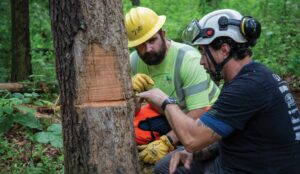It was rather warm for a mid-December day. So warm in fact that a heavy fog lay over the land. I was headed to an area along the Illinois River where there was a good concentration of wintering bald eagles. My hope was to photograph a few as they came out of their roosting area, which was just off the river.
But the fog was too heavy. I couldn’t see a thing. But as I sat pondering my situation I heard heavy wing beats. I looked up and could just catch the ghostly foggy figure of a large bald eagle as it flew what seemed like only inches from my head. Moments later another flew over.
This incident occurred some time ago and since then wintering bald eagle numbers have skyrocketed in the Land of Lincoln. Illinois is now second to Alaska in its wintering bald eagle population.
As waters begin to freeze in northern locations, bald eagles will begin to head south in search of open water. Eagles are fish hunters and need that open water in order to feed. Not that an eagle couldn’t catch other prey like rabbits or injured waterfowl, but they prefer the easier route and swoop down on easier prey, like fish. While migrating eagles begin to work into the state in November, it is December and January when they are most plentiful. By March, those eagles that do not nest in the state will begin heading northward to their breeding grounds.
While the Mississippi and Illinois Rivers harbor the majority of the eagles, sometimes with several hundred in one location, they can be found as well in smaller rivers and open bodies of water.
On July 4, 1976, the bald eagle was listed as an endangered species by the U.S. Fish and Wildlife Service. While habitat destruction played its part, it was the pesticide DDT that nearly wiped the eagles out. DDT itself did not kill the eagles, but it did affect the females and their ability to lay healthy eggs. The shells of the eggs were thinned by the pesticide thus allowing them to be crushed by the weight of the adult. Finally DDT was banned and the eagle population rebounded enough that the bald eagle was taken off the endangered list in 2007.
The bald eagle became a part of the design of the Great Seal of the United States in 1782. Most felt it stood for freedom, except for Ben Franklin who wrote the bald eagle was “a bird of bad moral character.”
While winter conditions dictate the eagle numbers it is not uncommon to see 3,000 to 4,000 eagles in the state. The locks and dams along our two major river systems will congregate the largest populations.
Not long ago when an eagle nest was found in the state it would be roped off so that the eagles would not be disturbed. Today there are numerous eagle nests up and down the state, and roping them off is not necessary.
In my area of central Illinois there are several known nests alone. Just ten years ago or so there were few if any. Still some nests remain secret while others can be viewed while driving down a road. Yes, Illinois bald eagles have rebounded in a big way.
It’s another dreary morning and I am back at the river. The river is like glass, but moving ever so slowly. Along the large cottonwoods I see spots of white, evidence of mature eagles. I see one here, and sometimes two there, perched and ready to move across the river in hopes of finding a fish. Through my binoculars I count twenty, mostly mature, but a few immature are mixed in. I have always seen them here along the river, but never twenty at once.
It’s an amazing comeback. Grab your binoculars and camera. Go check out this inspiring national symbol this winter.
Interesting eagle facts:
• Have a six- to eight-foot wingspan.
• Can weigh up to 14 pounds, with the female being slightly larger than the male.
• Can live up to 28 years in the wild.
• Mate for life.
• Will reach full maturity at four to five years of age, at which time their heads and tails will become entirely white.
• Have 7,000 feathers.
• Great eyesight, but are not great hunters and will miss live prey (like a rabbit) three out of four attempts.
• Largest nest ever recorded weighed nearly two tons.









